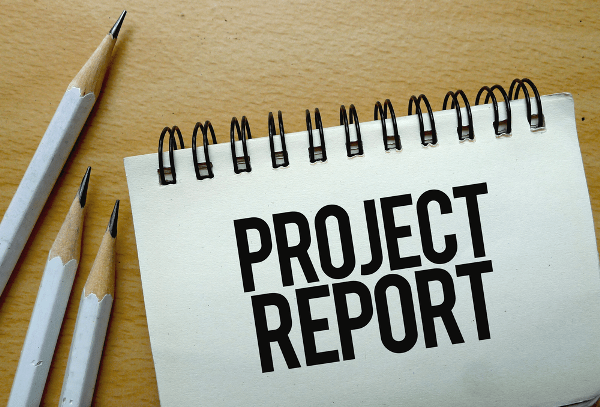When seeking a bank loan for your business venture, a well-structured Project Report is essential. It serves as a comprehensive guide for the bank, helping them understand the business’s objectives, financial viability, and repayment potential. Below is an overview of the key elements that should be included in a project report for a bank loan application.
1. Project Synopsis
The project synopsis provides a brief yet detailed summary of the proposed venture. It should highlight the main goals, objectives, and scope of the project. This section should also explain the product or service being offered, the location of the business, and the rationale for pursuing the project.
2. Proprietor Details
This section includes essential information about the project’s owner(s). It should cover the proprietor’s background, qualifications, experience, and any relevant past business endeavors. Lenders will use this information to assess the capabilities and reliability of the project’s leadership.
3. Executive Summary
The executive summary is a condensed version of the entire project, summarizing the core aspects of the venture. It should briefly describe the business opportunity, the capital required, how the funds will be used, and the expected outcomes. This section gives the bank a quick overview of the project.
4. Business Profile
The business profile section provides details about the nature of the business, the industry it operates in, and its organizational structure (e.g., sole proprietorship, partnership, corporation). It also includes the company’s mission, vision, and long-term goals, setting the stage for understanding the business’s direction.
5. Market Analysis
Market analysis offers a comprehensive look at the target market. This includes market size, growth potential, customer demographics, and trends. It should also include a competitor analysis, discussing the strengths and weaknesses of competitors and identifying opportunities for differentiation in the market.
6. Production Process
This section outlines how the product or service will be created. It describes the production steps, technologies involved, necessary machinery, and timeframes. A clear understanding of the production process is critical for demonstrating operational efficiency.
7. SWOT Analysis
A SWOT analysis evaluates the internal and external factors that could impact the business. It identifies the Strengths, Weaknesses, Opportunities, and Threats facing the business, offering a holistic view of potential challenges and advantages.
8. Fixed Capital Investment
This part covers the upfront costs associated with setting up the business, including expenses for land, buildings, machinery, and other fixed assets. It’s crucial for the bank to understand how these investments will contribute to the project’s success over the long term.
9. Working Capital
Working capital refers to the funds necessary for day-to-day operations, such as raw materials, wages, utilities, and other operational expenses. This section provides a breakdown of the short-term capital needed for smooth business operations and helps the bank assess liquidity.
10. Summary of Project Cost
Here, the overall project cost is summarized, covering both fixed capital and working capital requirements. Any other incidental expenses are also listed. This section should present a clear picture of how the funds will be allocated to various aspects of the project.
11. Projected Depreciation Schedule
This section outlines how fixed assets will lose value over time due to wear and tear. Depreciation affects the business’s financials, and this schedule helps the bank understand the long-term impact of asset value reduction.
12. Cost Statement
A cost statement details all expenses involved in producing goods or services. It breaks down both direct and indirect costs, such as raw materials, labor, and overheads. This helps the bank evaluate the financial feasibility of the project.
13. Projected Profitability Statement
This statement projects the future profitability of the business, usually over three to five years. It forecasts sales, cost of goods sold, operating expenses, and net profit. This section is vital for the bank to determine the business’s potential to generate returns.
14. Projected Cash Flow Statement
The projected cash flow statement shows the movement of cash in and out of the business over a specified period. It details expected cash receipts from sales and cash outflows for operational expenses, helping the bank assess liquidity and the business’s ability to meet its financial obligations.
15. Projected Balance Sheet
A projected balance sheet provides an overview of the company’s financial position, including assets, liabilities, and equity. It offers a snapshot of the business’s overall financial health, allowing the bank to assess its risk profile.
16. Loan Repayment Schedule
This section outlines how the loan will be repaid, including details on the repayment frequency, loan term, interest rate, and the principal amount. It demonstrates to the bank that the business has a clear plan for loan repayment.
17. Computation of Maximum Permissible Bank Finance (MPBF)
MPBF calculates the maximum amount of financing a bank can extend based on the project’s working capital and assets. This section shows how the loan amount was determined in accordance with bank guidelines and lending criteria.
18. Calculation of Debt-Service Coverage Ratio (DSCR)
The DSCR is a key measure of the business’s ability to repay debt. It is calculated by dividing net operating income by total debt obligations. A higher ratio indicates a lower risk to the bank, as it shows the business can comfortably meet its debt commitments.
19. Ratio Analysis
Ratio analysis evaluates the business’s financial health by analyzing various key financial ratios, such as liquidity ratios (current ratio, quick ratio), profitability ratios (return on equity), and efficiency ratios. It provides the bank with insights into the business’s overall performance.
20. Projected Break-even Point
The break-even point is the level at which the business will cover all of its costs, with neither profit nor loss. This section estimates when the business will become profitable, offering the bank a clear understanding of when the business will start generating positive returns.
21. Project Feasibility Graph
A project feasibility graph visually represents the projected financial performance of the business, such as sales growth, cash flow, and profitability over time. This graph helps the bank visualize the future trajectory of the project and its potential for success.
22. Assumptions
The assumptions section lists the key assumptions made while preparing the project report. These could involve factors such as expected market conditions, pricing, inflation, and labor costs. Clearly stating these assumptions helps the bank evaluate the reliability and realism of the projections.
23. Conclusion
The conclusion summarizes the overall viability of the project, reaffirming the reasons for the loan request and outlining how the business will meet its financial obligations. It reinforces the project’s strengths and long-term potential, giving the bank confidence in the borrower’s ability to repay the loan.












